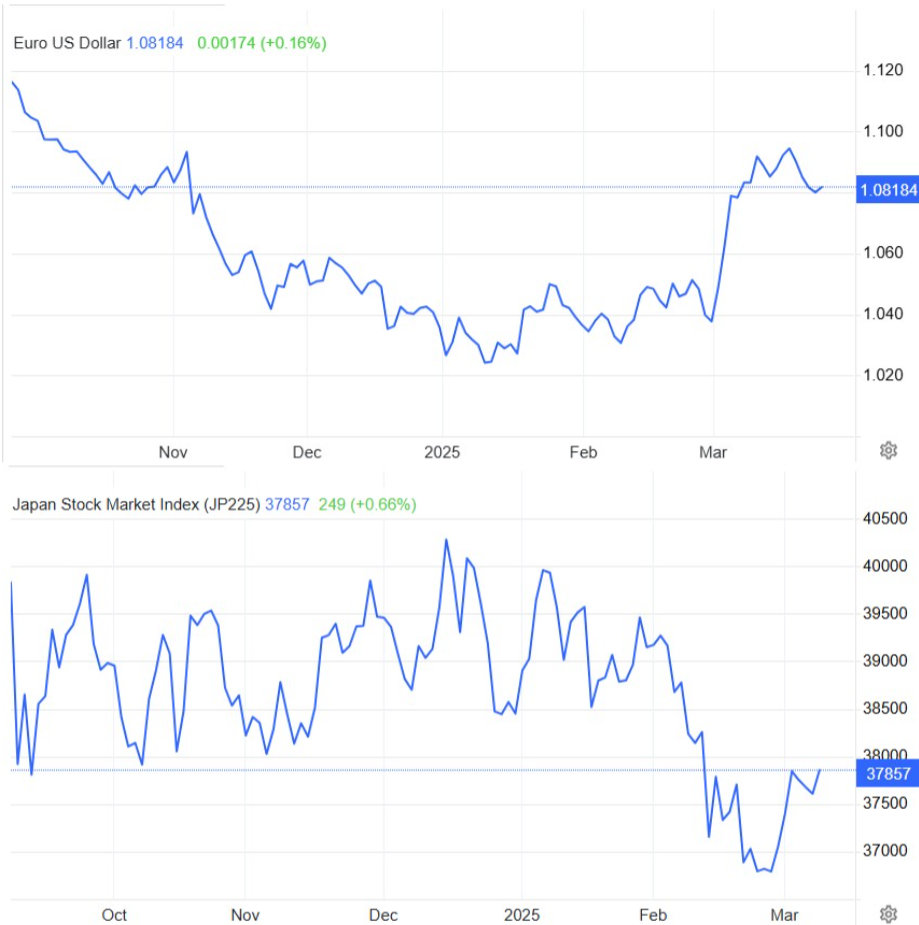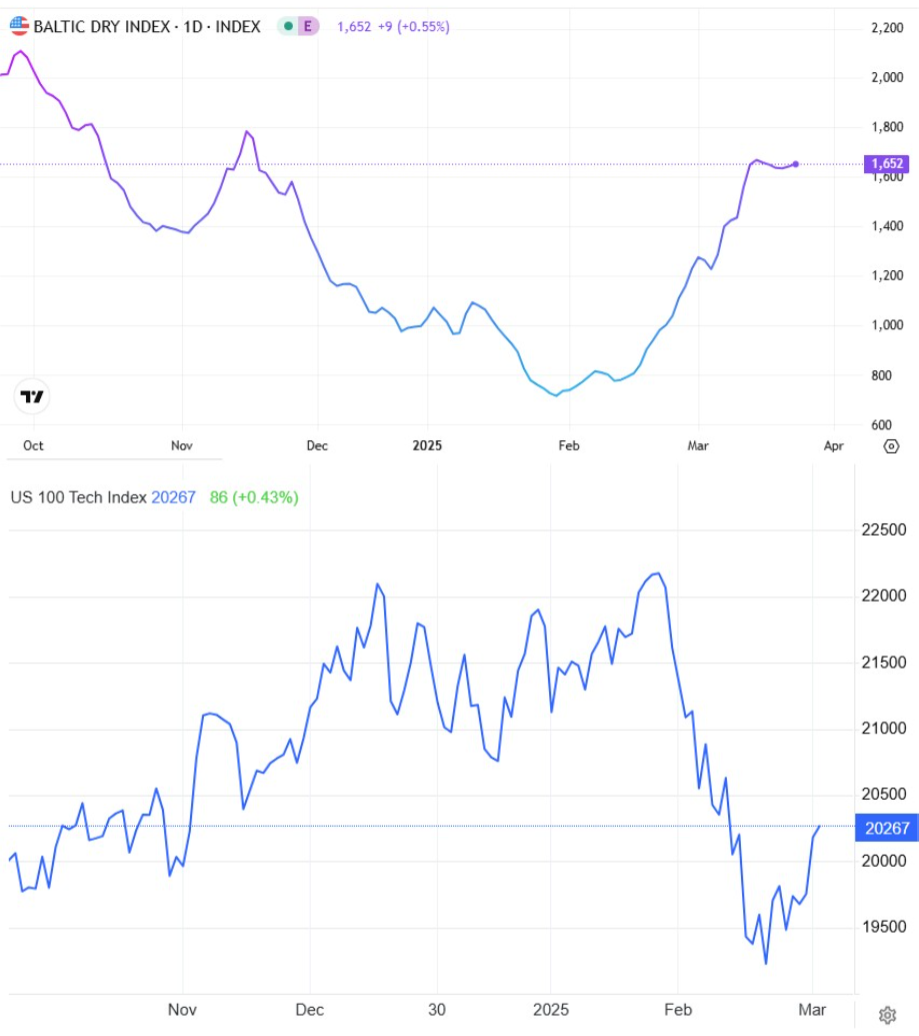We are just a few trading sessions away from the end of March and the close of Q1 2025, which will set the starting benchmarks for the year, based on the performance of all global markets and investment products.
So far, the weakest performers have been the U.S. and Japan, both of which have remained in negative territory since the beginning of the year. However, recent sessions have shown signs of a bullish reversal. Notably, last week saw a record-breaking inflow of investment capital into equities — a phenomenon not seen since September 2022. (It’s worth recalling that back then, tech companies were trading at single-digit P/E ratios, and the subsequent rally is well known to all.)
In our last two articles, we deliberately titled them “Make America Great Again”, reflecting our broader outlook for the next 2–4 years. The current underperformance of U.S. indices compared to gains in European markets will likely be seen as just another statistical anomaly when we look back. We anticipate this trend reversing soon, especially as Europe faces growing economic and political challenges ahead, which could lead to significant corrections in its current performance.
Reviewing last week’s developments reveals a series of pivotal changes that may serve as catalysts for the market rebalancing and returns we outlined. Of particular importance is the shift in Ukraine’s stance regarding ceasefire negotiations — we maintain that this war has effectively ended, not just a temporary truce for 30 days. Starting March 24, new rounds of U.S.-Russia meetings could usher in a more constructive climate.
The EU’s response to any agreement will be crucial — its goals, associated costs, and potential benefits must be clarified. Based on preliminary estimates, the annual economic benefit from ending the war in Ukraine could range between $1 trillion to $1.4 trillion for Europe, Russia, and the U.S. combined. The key question remains: how will this value be distributed among the involved parties?
These developments are expected to act as daily catalysts for movements across commodities, currencies, and companies positioned to capitalize on the end of this geopolitical crisis. The shipping sector stands to be one of the biggest beneficiaries. It’s an opportune time for investors to consider positions in Greek-listed shipping companies (and not only), as we previously noted while waiting for attractive entry levels. A decline in fuel prices and increased product transport — particularly to and from Russia — will drive this trend. The current consolidation in the Baltic Dry Index near its present levels and its gradual buildup toward 2,100 points suggest an impending breakout.
The euro, in light of these recent developments — including the surge in equity inflows — is likely to appreciate. Negative year-to-date returns in the U.S. markets and current exchange rate levels create a fertile environment for identifying attractive, high-potential opportunities.
A key development last week — which confirmed our prediction made in the March 18 article — was the shift in stance by the U.S. Federal Reserve Chairman. He appears to have stopped opposing Trump’s agenda for lower interest rates and is now moving in that direction. This was evidenced in the March 19 post-meeting announcement by the Fed, which was characterized as dovish by analysts. Elevated interest rates are not expected to support the current challenges of the U.S. economy, especially considering its high debt levels and Trump’s proposed tariffs (which we believe will be revised down in terms of scope and rates before their expected implementation on April 2).
Finally, starting in April, we enter a critical period for corporate earnings announcements for Q1. Many positive developments are not yet priced into the markets, and we expect a wave of upbeat earnings reports from key companies — likely to further boost market sentiment and deliver strong returns.

by Kotsiakis George
Διαχειριστής
Gekodesk & Partners
Global Investment Services









